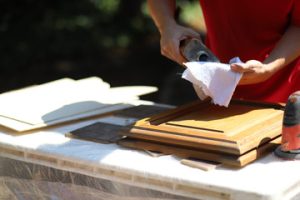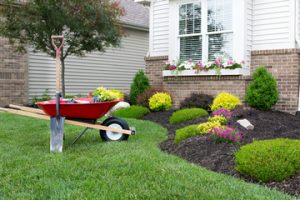Your roof is your primary protection from the elements. As such, it is essential that you maintain it. Repairing or replacing your roof may cost less upfront, but repeated repairs can add up and are often only a temporary solution.

They say an ounce of prevention is worth a pound of cure, and this is especially true for your roof.
The cost of a roof replacement depends on the size and materials used. The price of the labor is also a factor, and it’s essential to hire skilled roofing contractors.
Insurance costs also play a role in the decision to replace a roof. If the damage is caused by a covered peril, such as wind or hail, homeowners insurance may pay for part or all of the replacement cost. It is important to check your homeowners policy’s Loss Settlement section for details. It should say whether your claim will be settled based on Replacement Cost Value (RCV), Actual Cash Value (ACV), or an agreed-upon settlement.
While RCV provides the most comprehensive protection, it comes with a higher premium and more out-of-pocket expenses. ACV, on the other hand, allows you to receive an initial check for the full replacement cost minus your deductible, and then makes subsequent payments according to a pre-determined depreciation schedule.
Many legitimate losses do not become apparent until the old roof is removed. If your contractor discovers rot, sheathing damage or other issues during the tear-off process, file supplements immediately with photos, contractor invoices and inspection reports. These detailed documents help reduce back-and-forth with the insurance adjuster and increase the likelihood of receiving additional payment.
The choice of roofing material will also affect the cost. Asphalt shingles are the most common and affordable, while more expensive materials like slate or copper provide a more attractive aesthetic. These materials are long-lived and require less maintenance compared to natural wood or clay. However, they are also more prone to damage by debris and heavy snow.
Time
The time needed to complete a roof replacement depends on the size and type of roofing materials used. Asphalt shingles are one of the fastest options, while metal roofs require more time to install due to their size and complexity. The condition of the existing roof also impacts the timeline, as it may need to be repaired before the new roofing materials can be installed. If significant damage has occurred, repair costs can add up quickly.
A full roof replacement is typically necessary when your home’s roofing is beyond its useful lifespan. It’s important to consult with a professional when making this decision. They can provide expert advice and detailed evaluation to help you understand the benefits and cost of both options.
If the roof is damaged in a way that requires additional repairs, it’s often more economical to replace the entire roof rather than repair the damaged areas. This is especially true if the damage has caused a sagging roof or signs of structural problems.
The timing of a roof replacement can be affected by weather conditions and the length of time it takes to obtain permits and approvals from local authorities. A well-organized project manager can work with you to minimize delays by scheduling the replacement during a dry season and planning ahead for weather-related issues. They can also communicate with homeowners about any noise restrictions or other concerns that could impact the timeline of the job.
Aesthetics
A roof is more than just a protective shield from the elements; it’s an architectural canvas, with the power to define a property’s character, charm, and visual appeal. Whether it’s the sleek lines of a modern abode or the rustic beauty of a historic landmark, the aesthetic of a roof is often what grabs the attention and imagination of passersby. As a result, a well-designed, visually appealing roof can boost the curb appeal of a building and increase its value and livability.
Aesthetics of a roof can be affected by its color, material, and overall appearance. Some roofing materials are better suited for certain climates than others, and choosing the right roof color can enhance energy efficiency and harmonize a building’s design with its surroundings. Aesthetic considerations for a roof are also important when preserving historical or heritage buildings. Replacing a historical roof with a new one that doesn’t reflect its original design can detract from the integrity of the structure.
In addition to enhancing the curb appeal of a building, an attractive roof can also help to improve its overall image and brand recognition. A beautiful roof can leave a lasting impression on visitors and potential customers, signalling that the property has been well-maintained and cared for. This is particularly important in the real estate industry, where first impressions can make or break a deal.
Whether your business needs a new roof or just wants to improve its aesthetics, the experts at Spears Roofing are happy to help. They can recommend a variety of roof styles and materials that will suit your taste and complement your building’s design. They can even provide a mock-up of your roof to show you how it will look once it’s installed.
Energy efficiency
When it comes to roof replacement, homeowners need to weigh the cost against potential value and return on investment. While repairs are cheaper than a comprehensive roof replacement, the ongoing costs of patchwork solutions add up over time and may end up costing more than an upfront investment. In addition, replacing an old roof often involves addressing other issues such as water damage and mold, which repairs cannot adequately address.
The right roofing material can also significantly improve a home’s energy efficiency. For instance, modern roofing materials can include reflective technology that reduces energy expenses by reflecting solar radiation and minimizing heat absorption. Additionally, insulated roofing materials can significantly cut cooling expenses. These energy-efficiency enhancements can help homeowners save on utility bills, which are among the largest ancillary home costs.
In addition to energy-efficiency enhancements, a new roof can also improve a home’s curb appeal and architectural character. New roofs can be designed to feature attractive color options, shingles, tiles, or other roofing materials that complement a home’s overall aesthetic.
As a result, a new roof can boost a property’s value and enhance its marketability in the real estate market. In fact, potential buyers are willing to pay a premium for homes with a new roof, enabling homeowners to command a higher sale price for their properties.
If you are considering a roof replacement, consult with a professional to determine the most appropriate solution for your needs and budget. A professional can also provide advice on local market conditions and offer recommendations that will maximize your return on investment. Also, it is a good idea to consult with a realtor to get more insights on a new roof’s impact on your property.
Warranty
Many homeowners may be tempted to skip purchasing roof warranties. However, the insurance-like protection of a warranty is an important investment that can prevent significant repair costs and even structural damage to your home. Moreover, you can choose from a variety of coverage options to suit your needs. For example, you can opt for a full-system warranty or a manufacturer’s warranty with workmanship coverage.
A manufacturer’s warranty covers the materials used in your roof, such as shingles. These warranties typically cover manufacturing defects and last from 20 to 50 years. However, these warranties do not cover installation errors or damages incurred by external factors, like severe weather. A workmanship warranty, on the other hand, covers installation mistakes made by the roofing contractor. These warranties usually cover repairs for leaks and other problems that result from poor installation. They also provide protection against sagging and buckling of the roof surface.
When choosing a roofing contractor, be sure to check their certifications and history in the industry. A company with a lengthy operational history is more likely to be around when you need them. In addition, they should have a dedicated phone number and business address, and a list of satisfied customers.
If you’re interested in upgrading your warranty, talk to a local roofing contractor to learn more about the options available. Then, consider your home’s value and how long you plan to stay in your current location before deciding whether or not an upgraded warranty is worth the cost.








